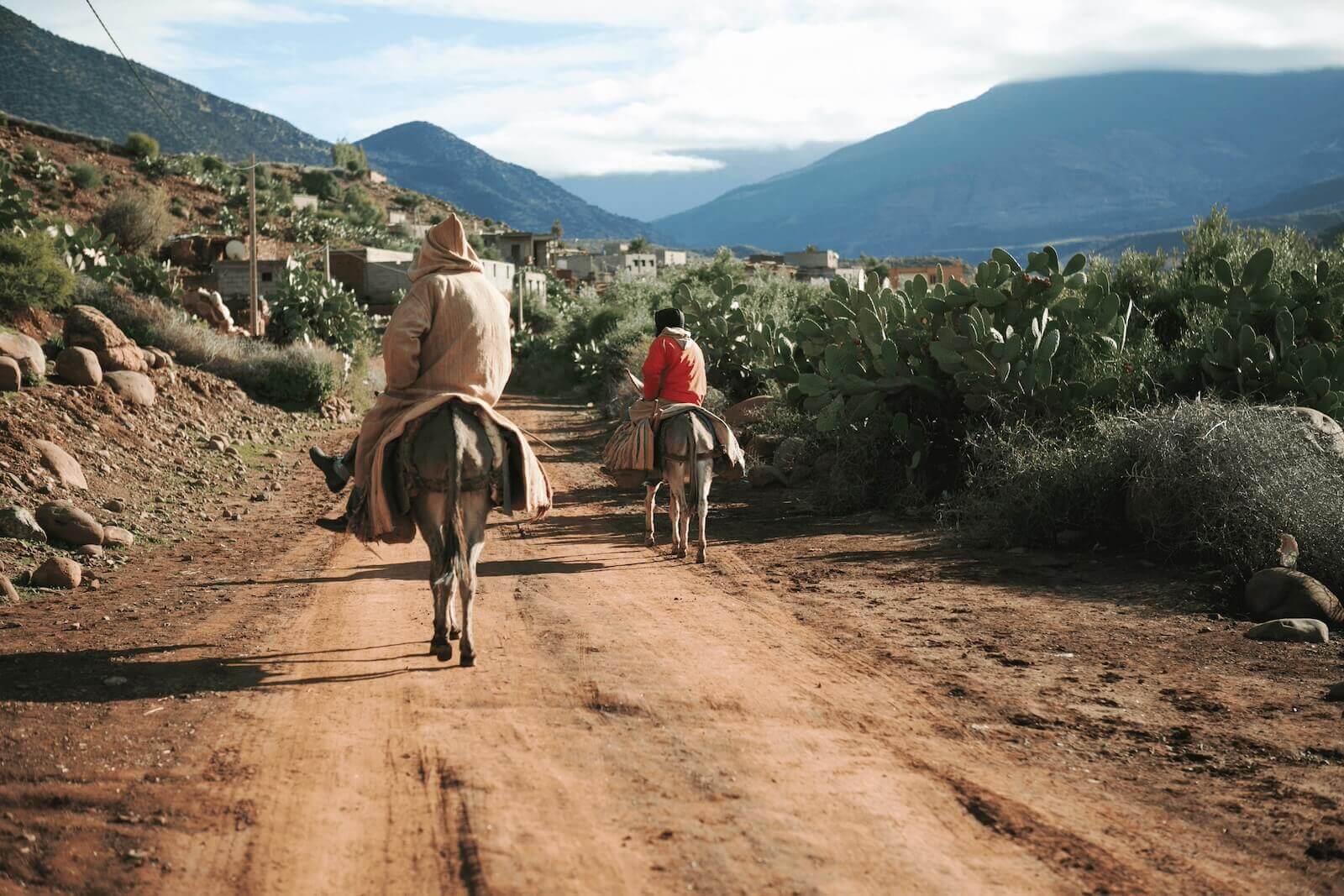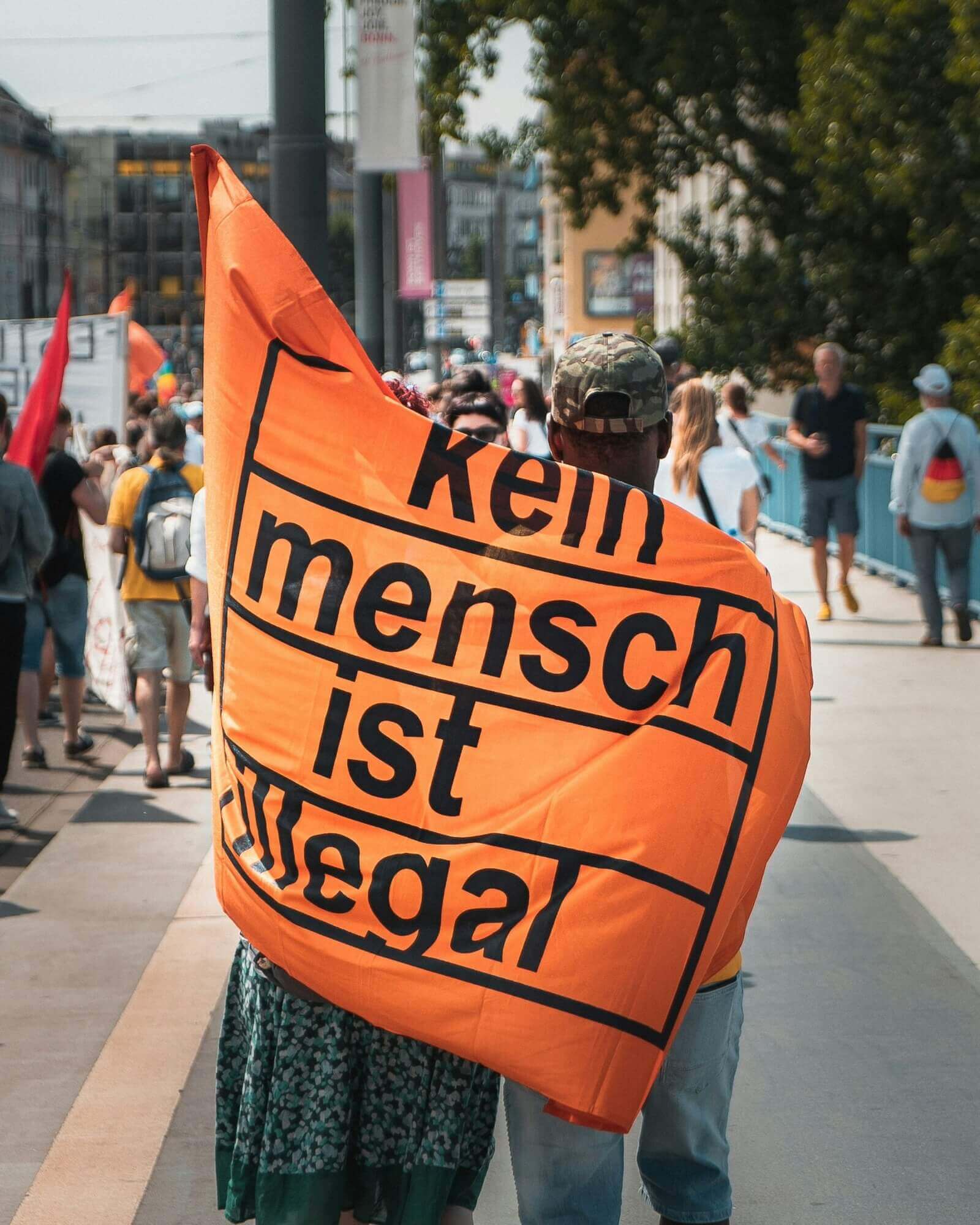Background, Challenges and Pathways for Refugees from Africa
Flight and Migration in Africa

Internal Migration, Internally Displaced Persons, Flight and Migration – an Introduction to the Terms
Definitions and Differences
Migration refers to the permanent or temporary movement of the centre of life of an individual or group from one place to another. Internal migration takes place within a country, while international migration crosses borders. Flight, on the other hand, means being forced to leave one’s place of origin, for example due to war, persecution or natural disasters. For these reasons, refugees flee from Africa to Europe or other countries and regions. Internally displaced persons (IDPs) are people who have fled within their own country due to conflict, violence or natural disasters and usually seek protection in refugee camps.
Overview of the Different Types of Migration and Refugee Movements from Africa
Africa is a continent with a long history of both voluntary and forced migration.
Violent uprisings and extreme weather events in various regions of Africa have led to a sharp increase in the number of IDPs. In Sudan, 9.1 million people were internally displaced in 2023, the highest number ever recorded. At least 5.8 million people were forced to leave their homes last year due to conflicts between the Sudanese Armed Forces and the Rapid Support Forces. The situation in the Democratic Republic of Congo also continued to deteriorate in 2023. The number of IDPs there stood at 6.3 million at the end of the year.
Almost half of the world’s IDPs live in sub-Saharan Africa.

Causes of Flight in Africa: Wars, Poverty and Hunger
Political Instability and Conflict
Political instability and armed conflict are the main causes of flight and migration in Africa. Countries such as Somalia, South Sudan and the Democratic Republic of Congo (DRC) are examples of states where protracted conflicts have forced millions of people to flee. The reasons for Africa’s refugee crisis range from ethnic tensions and political power struggles to civil wars and international intervention. In Mali, ongoing fighting has forced tens of thousands of people to flee inside and outside the country. In the DRC, power struggles have been raging for decades and the situation is very chaotic. Hundreds of thousands have sought safety in neighboring countries such as Uganda.
Despite the independence of Southern Sudan in 2003, the situation in Sudan and Southern Sudan has not improved. The war continues and the humanitarian needs are great. At the same time, many refugees from other countries are living in Sudan, mostly in extreme poverty.
Economic Hardship and Poverty
Africa is characterised by extreme poverty and economic insecurity in many places. Unemployment, lack of economic prospects and inadequate social security systems drive people to migrate to other regions or countries in search of a better life.
The Lake Chad region is one of the poorest in the world. The political situation in Nigeria, Niger, Cameroon and Chad is unstable and state structures are virtually non-existent due to the widespread presence of terrorist militias.


Climate Change and Environmental Disasters
Refugees from Africa are often victims of climate change, which is having a devastating impact in many parts of Africa. Droughts, floods and other natural disasters destroy livelihoods and force people to flee. Regions such as the Sahel are particularly affected, where extreme weather conditions affect agriculture and livestock, the basis of people’s livelihoods.
In the Horn of Africa, in countries such as Ethiopia, Eritrea and Somalia, war and terrorism, poverty and famine, desertification and locust infestations all come together. Somalia continued to suffer from persistent insecurity and extreme weather events in 2023, including flash floods in April 2023 after five consecutive failed rainy seasons. During the year, 1.1 million people were displaced by conflict, and by the end of the year, 3.9 million people remained internally displaced.
The Route to Europe for Refugees from Africa
Most refugees from Africa do not reach Europe. Instead, many live as IDPs in their home countries or flee to neighboring countries.
The routes through West and East Africa are among the deadliest in the world, with many African refugees dying in the Sahara. Vincent Cochetel, Special Representative of the UNHCR, estimates that twice as many people die on the way to the Mediterranean than during the crossing.
Nevertheless, thousands of refugees attempt to reach Europe from Africa every year. According to the UNHCR, around 266,000 migrants and refugees from Africa reached the European continent in 2023.
Escape Routes and Dangers
To reach Europe, refugees leave Africa through the main route across the Sahara Desert and the Mediterranean Sea. The route through Libya is very risky, as migrants and refugees in Libya are often victims of abuse and human trafficking. Women and children are particularly vulnerable to hunger, disease, gender-based and physical violence. A stronger commitment to women’s rights in Africa is therefore particularly important.
Border Controls and EU Policies on Refugees from Africa
The European Union has taken measures to control migration. These include increased border controls, agreements with transit countries such as Libya and Turkey, and repatriation programmes. However, these measures are controversial because they often violate the human rights of migrants and refugees from Africa and do not effectively address the root causes of flight. It would be more sustainable to create meaningful prospects for refugees from Africa in Europe.

Creating prospects for refugees from Africa in Germany and Europe
Vocational Qualifications and Labour Market Integration
Education and vocational qualifications are crucial to creating prospects for refugees. Through education and training programmes, refugees can acquire new skills and better integrate into the labor market. Various NGOs and international organizations offer such programmes to promote self-employment and integration of refugees. One example of a company supporting such initiatives is Deutsche Telekom with its ‘Internship plus Direct Entry’ programme, which offers refugees career prospects through internships and direct entry opportunities.
Social and Psychological Support
As described above, fleeing is often traumatic, so refugees from Africa in Europe need social and psychological support to help them overcome the trauma of flight and find their feet in their new environment. Human rights in Africa are not respected in many places, which is why many people feel forced to flee. This makes it all the more important to offer protection and support to traumatized people here in Europe. Psychosocial counseling centers and community programmes can provide much-needed support and help with integration, although access is often difficult due to bureaucracy and language barriers.
How You can Help Refugees from Africa
Organizations such as UNHCR, Médecins Sans Frontières and the International Red Cross are active in crisis zones and provide vital assistance. The German organization Pro Asyl campaigns for the rights of refugees and provides legal advice and assistance with asylum procedures in Germany. Local African NGOs in Africa also play an important role in assisting displaced persons and refugees in Africa. As an individual you can help in the following ways:
Donations in cash or in kind
to organizations working for the rights and integration of refugees
Volunteering
for example in the form of language lessons, help with finding accommodation or spending time together
Political commitment
for the rights of refugees by participating in demonstrations, petitions or writing letters to political representatives
Frequently asked questions
What are the main drivers of displacement and migration in Africa?
The main causes of displacement and migration in Africa are political instability and armed conflict, economic hardship and poverty, and the effects of climate change. Protracted conflicts, ethnic tensions, economic insecurity and extreme weather events such as droughts and floods are forcing millions of people to leave their homes.
Where do African refugees come from?
Refugees from Africa mainly come from countries affected by political instability, armed conflict and economic crisis. The main countries of origin are Somalia, South Sudan, Democratic Republic of Congo, Eritrea, Sudan and Nigeria. These countries are particularly affected by war, violence and extreme living conditions, forcing many people to flee.
How can I help refugees from Africa in Germany and Europe?
There are several ways to help refugees from Africa. You can give financial support to organizations working for the rights and integration of refugees. You can also volunteer, for example by giving language lessons, helping to find accommodation or simply making contact. Political activism and lobbying for refugee rights are also important ways to help.

